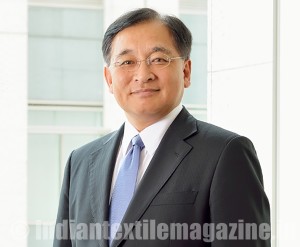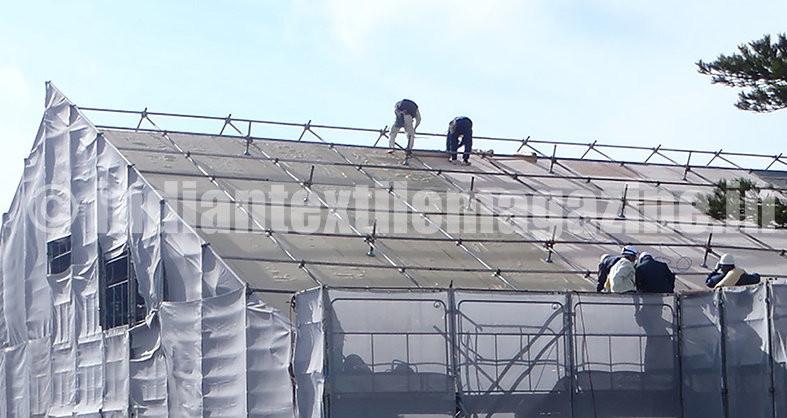Teijin Ltd. has announced that it has developed two new fabrics of Twaron and Technora para-aramid fibers to protect facilities such as lodges and evacuation shelters from airborne volcanic fragments measuring as much as 10cm.

The new fabrics are designed and produced in accordance with the Japanese Cabinet Office’s new regulations for strengthening evacuation facilities located near volcanos. The Ministry of Environment is now using the fabrics to refurbish the roof of the Ebino Eco Museum Center in Kirishima-Kinkowan National Park on the island of Kyushu in southern Japan.
Teijin developed the new fabrics in consultation with the Cabinet Office, National Defense Academy and the Mount Fuji Research Institute of the Yamanashi prefectural government. In simulation tests held at a National Defense Academy facility in September 2015, the fabrics demonstrated their capacity to withstand fist sized airborne fragments similar to those produced during the September 2014 eruption of Mt. Ontake, located some 200 km west of Tokyo.
Teijin is the world’s only company manufacturing two types of lightweight, strong and heat-resistant para-aramid fibers. Twaron offers six times more tensile strength than steel of the same weight, as well as superior heat resistance and elastic modulus. Technora boasts even greater tensile strength and resistance to impact, fatigue and chemicals.
The choice of which para-aramid fiber to use depends on the envisioned level of protection required for each facility, based on a specific volcano’s activity level, altitude and local weather patterns. Teijin will focus marketing activities on local municipalities and private enterprises in areas prone to volcanic activity, with sales expected to reach 50,000 sq.mt. by the fiscal year ending March 2017.
Protecting evacuation facilities and other structures from large airborne fragments is an important issue in Japan, one of the world’s more active volcanic regions. While materials such as reinforced concrete and steel offer required levels of strength and durability, transporting heavy materials and large equipment to highlands can lengthen the construction period and raise construction costs. The deteriorating effect of severe weather on steel is another problem.
High-performance composite materials that offer new value are one of the four business pillars in the Transformation and Growth Strategies of Teijin’s current medium-term business plan. Promising fields for Teijin’s high-performance fibers include safety, infrastructure and energy, functional paper and filters, and mobility. The company is putting a high priority on leveraging its high-performance materials in advanced solutions to meet diverse demands in the global market.
Teijin is a world leader in aramid fibers. Renowned for their strength, sustainability, safety, heat resistance and low weight, Twaron, Technora, Teijinconex and Teijinconex neo are used worldwide for different applications, including automobiles, ballistic protection, marine products, civil engineering, protective clothing, and oil drilling.
Twaron para-aramid fiber is produced by Teijin Aramid in the Netherlands, while Technora para-aramid fiber is produced by Teijin Ltd. in Japan. Both can withstand temperatures of up to 400°C and offer exceptional strength for bulletproof and stab-resistant protective clothing. They also are excellent materials for automotive brake pads and reinforcement in tires and fiber-optic cables.
Teijinconex meta-aramid fiber produced by Teijin Ltd. in Japan offers highly durable heat resistance and flame retardation for fire-fighting protective apparel and industrial uniforms. It is also used as a reinforcement material for heat-resistant filters, rubber belts and turbo-charger hoses. In August 2015, Teijin (Thailand) Ltd. began producing Teijinconex neo, a dyeable meta-aramid fiber offering high heat-resistance.
